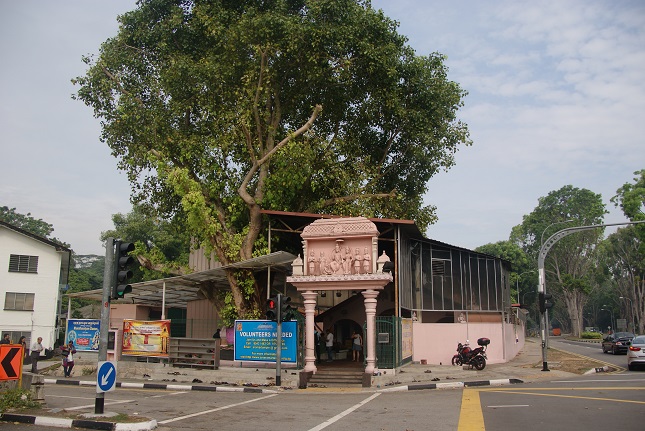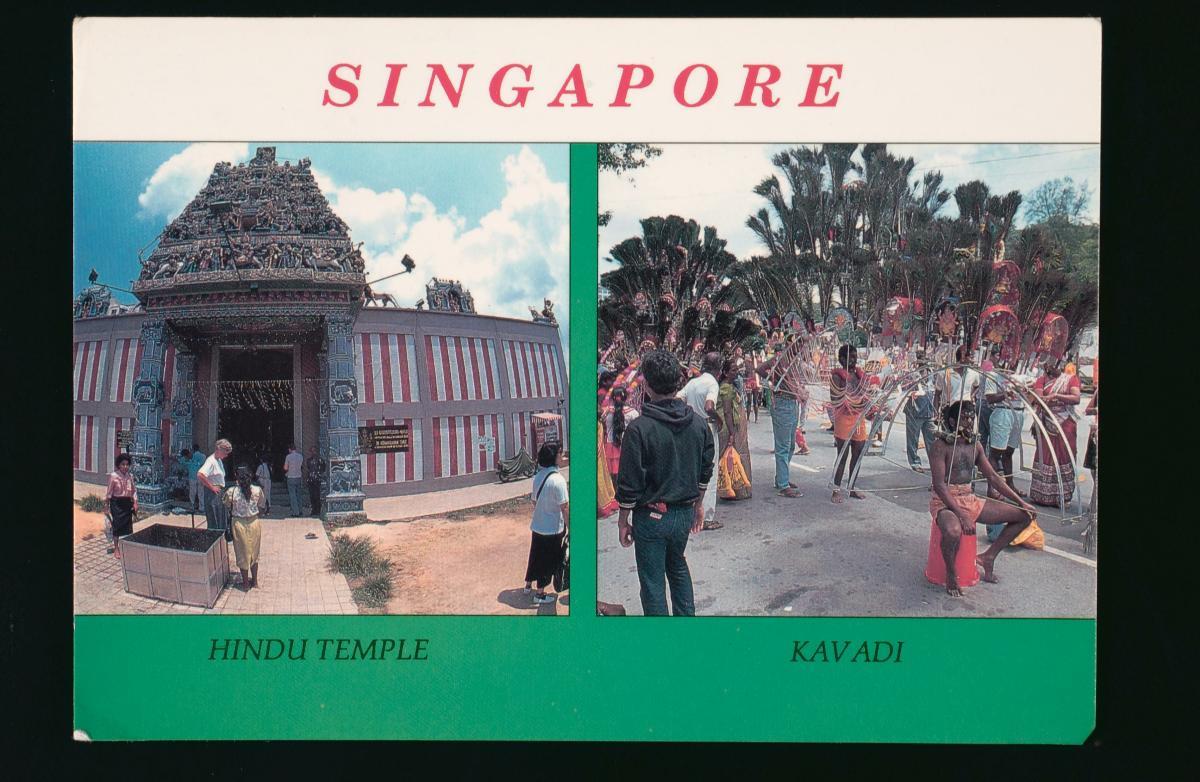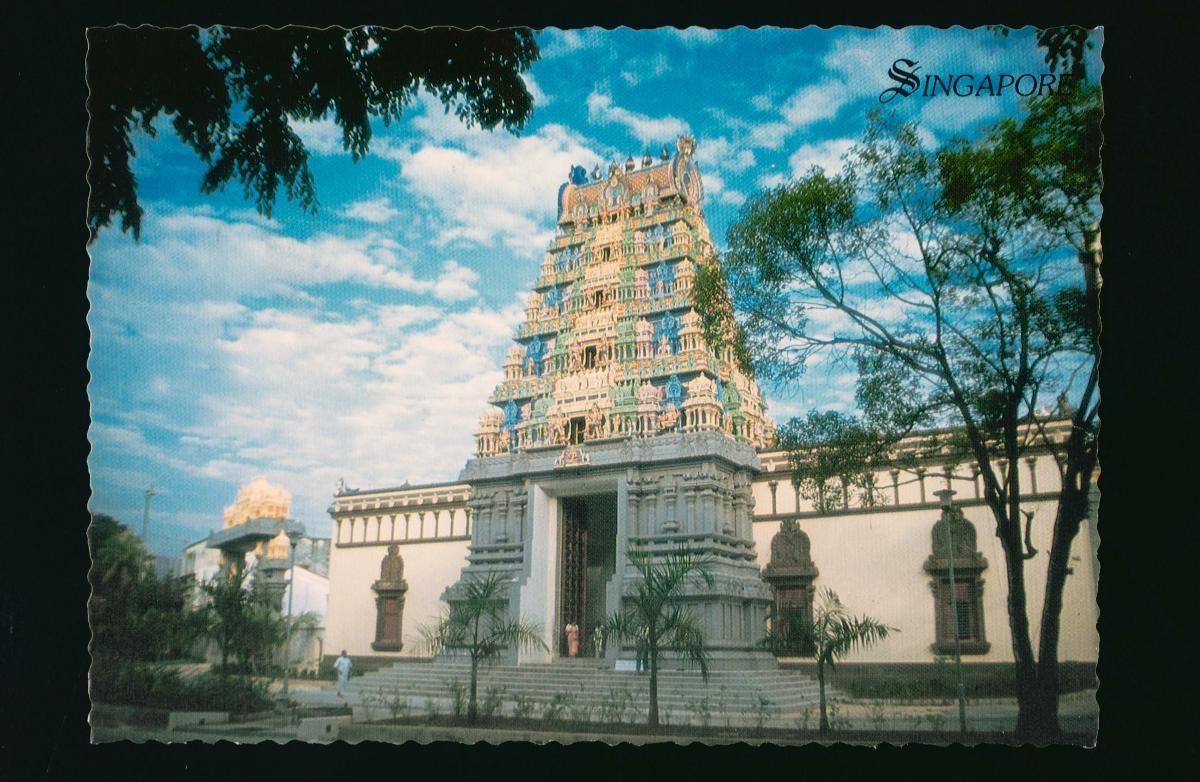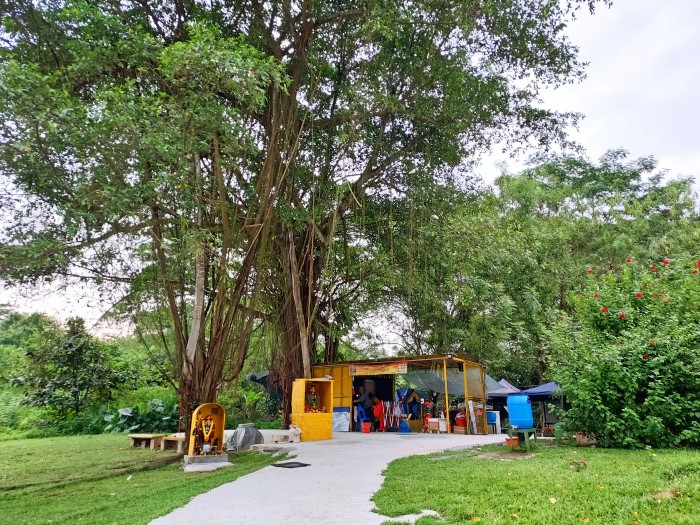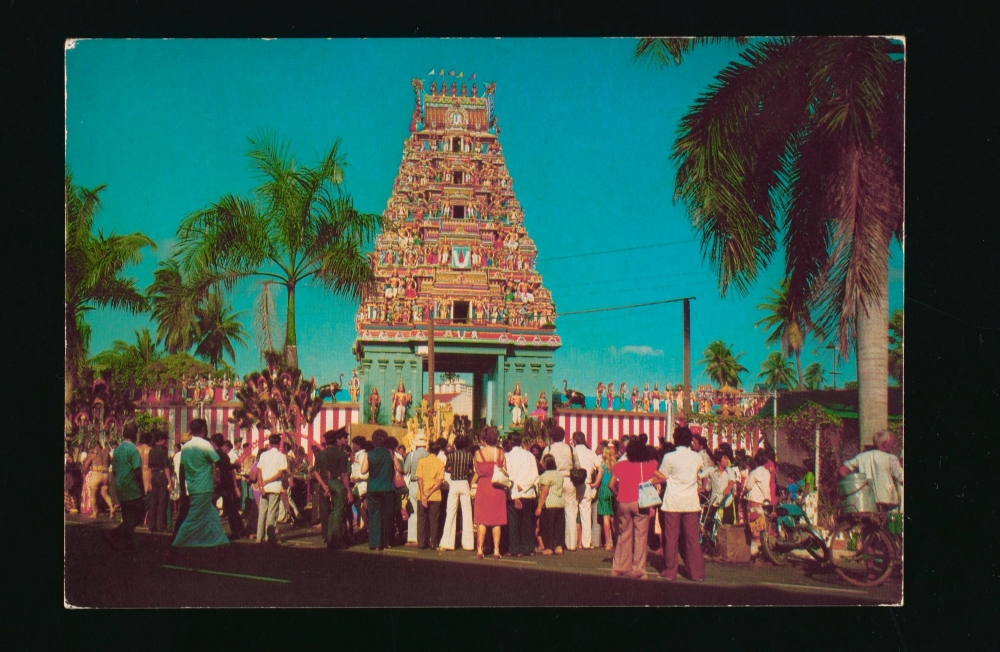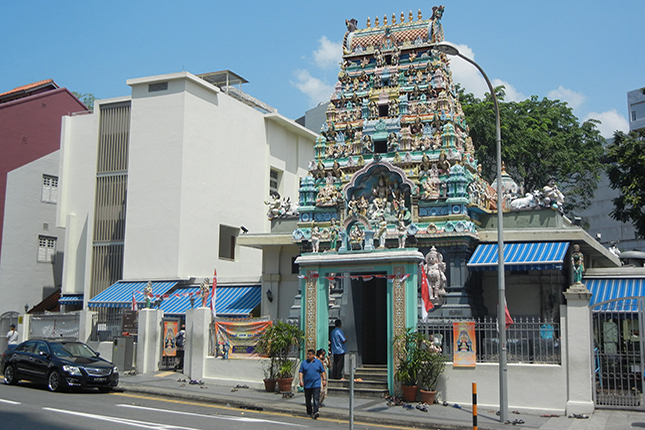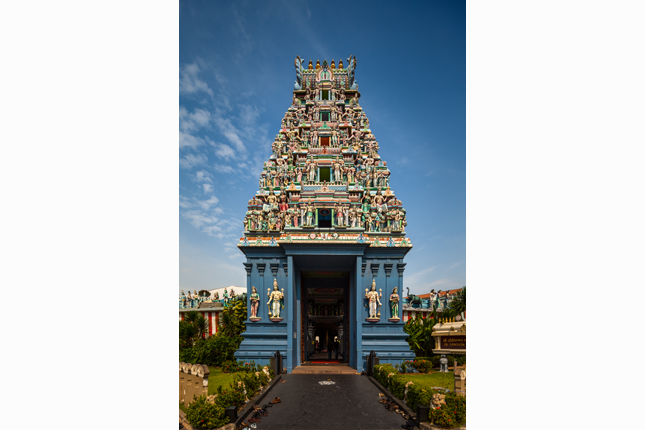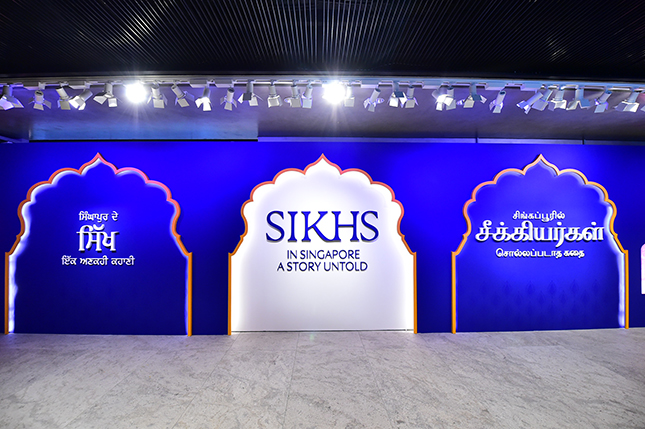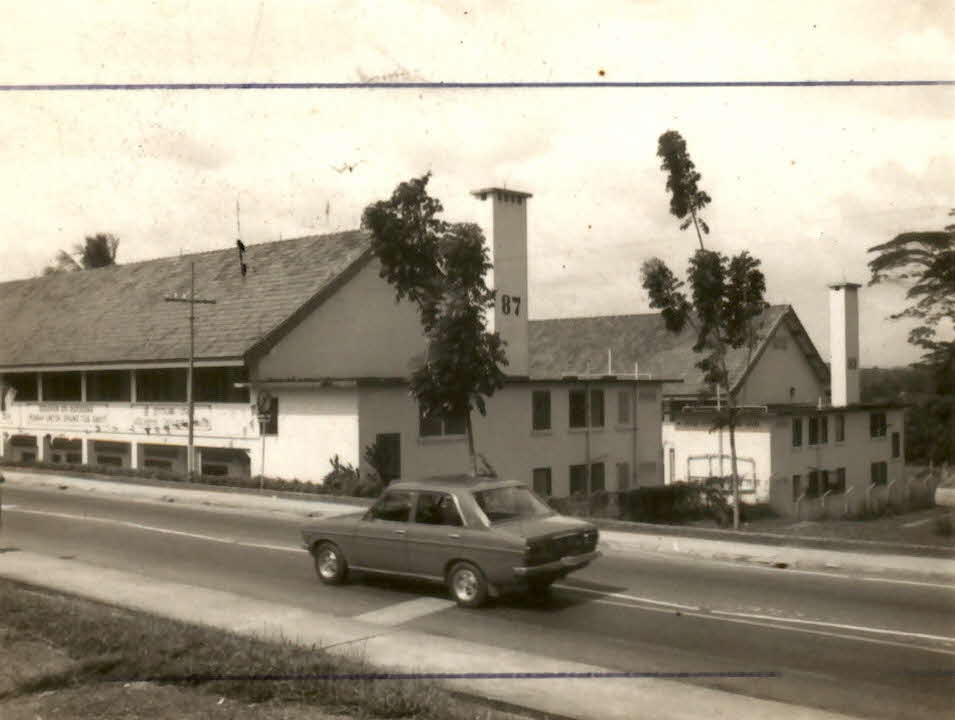The history of the temple can be traced back to a shrine situated at the foot of a tree at 14th milestone Changi. The shrine was the place of worship for villagers in the nearby area. In 1946, the British Army donated the site where the shrine was situated, and Mr Ram Naidu from the British Indian Army began constructing a temple dedicated to Hindu god Rama.
Like others of its era, this temple is secluded behind a perimeter wall decorated with mythical elements, with a devotional hall and recessed sanctuary. From the outside, it appears as a towering, multi-tier main gateway adorned with mythical figures and religious symbols. The ornate gateway is topped by a symbolic barrel roof-like structure.
The temple is auspiciously situated — it faces east, overlooks the sea and guards the village. These three factors are the most important determinants in the ‘Vasthu Shastra’ of a temple. The favourable location of the temple also received great praise from experts in Temple Science and Architecture from Madurai, South India.
Spiritual centre
Following its post-war construction, the temple’s initial patronage was from the Hindu workers of the Royal Air Force. As more public housing estates developed in the east, its congregation has likewise increased. In fact, the Sree Ramar Temple at Changi has since become a spiritual centre for Singaporeans in the eastern part of Singapore.
The temple hosts many annual religious activities like Rama Navami and Hanuman Jayanti, both grand occasions; and the Navarathiri Festival and Chandi Homams. Additionally, devotees are invited to participate in the villaku pooja, held on the first Sunday of each month.
Interestingly, the temple is also visited by non-Hindu believers. To cater to their needs, idols of the Lord Buddha and Guan Yin (Goddess of Mercy) were set up in the temple.
One of a kind
The temple is notable as being the only temple of its kind in South East Asia dedicated to Hindu god Rama.
Vaishnavitism and Saivitism
Although it is a Vaishnavite (followers of Vaishnavism, considers Vishnu as the Supreme Lord) temple, Saivite (followers of Shaivism, one of the largest sects that believe Shiva is the supreme god) deities can also be found in the temple. This allows Hindus to complete their rituals at the temple after conducting post-funeral rites at the seaside.
This unique setup is the result of three other Hindu temples being amalgamated with Sree Ramar Temple: Sri Manmatha Karunaya Eswarar Temple, Sri Muthu Mariamman Temple and Sri Palani Aandavar Shrine.
Buildings and sites featured on Roots.SG are part of our efforts to raise awareness of our heritage; a listing on Roots.SG does not imply any form of preservation or conservation status, unless it is mentioned in the article. The information in this article is valid as of August 2019 and is not intended to be an exhaustive history of the site/building.




